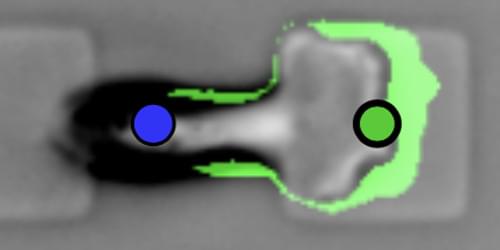Experiments demonstrate that biological cells actively change shape to respond to their surroundings when moving in confined regions.
The movement of cells is essential for embryo development and wound healing. A study of individual human cells moving on a micropatterned surface reveals some of the basic principles governing this movement and shows how cells adapt their shape and behavior to the geometry of their surroundings [1]. The researchers developed a theoretical model, based on their experimental findings, that could be used to study and predict cell movement in more complex environments.
The shapes of animal cells are controlled in part by a web of protein filaments called the cytoskeleton, which can be rearranged by the cell to drive motion. For example, a cell can begin moving by creating a protrusion that bulges out from its surface. Such movement depends on the cell’s adhesion to the surrounding surfaces and on the formation of an asymmetrical arrangement of the cytoskeleton, referred to by biologists as polarity, which drives the growth of protrusions. The motion is also affected by the internal structures of the cell, especially the nucleus, which is less compressible than the fluid cytoplasm.
